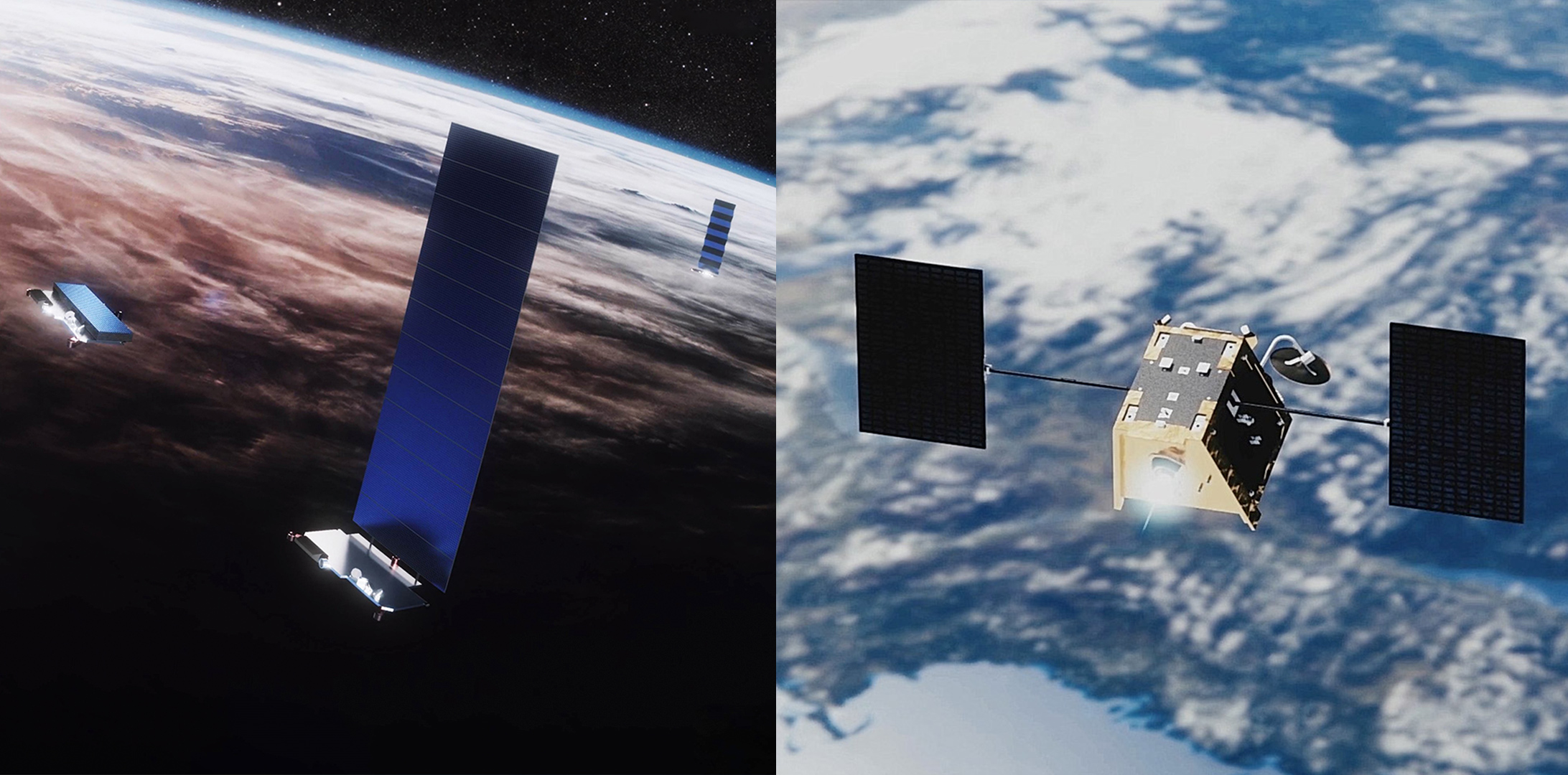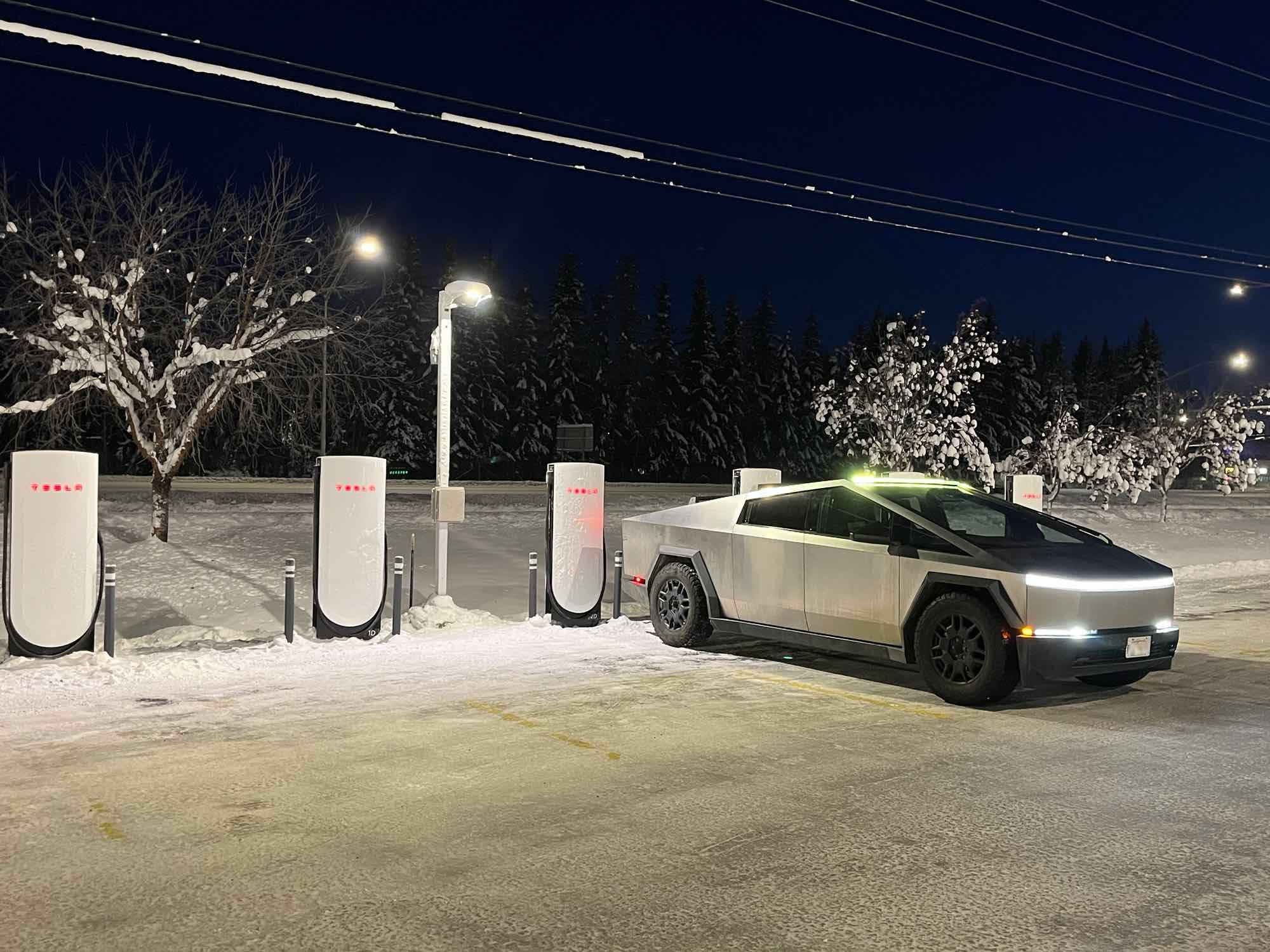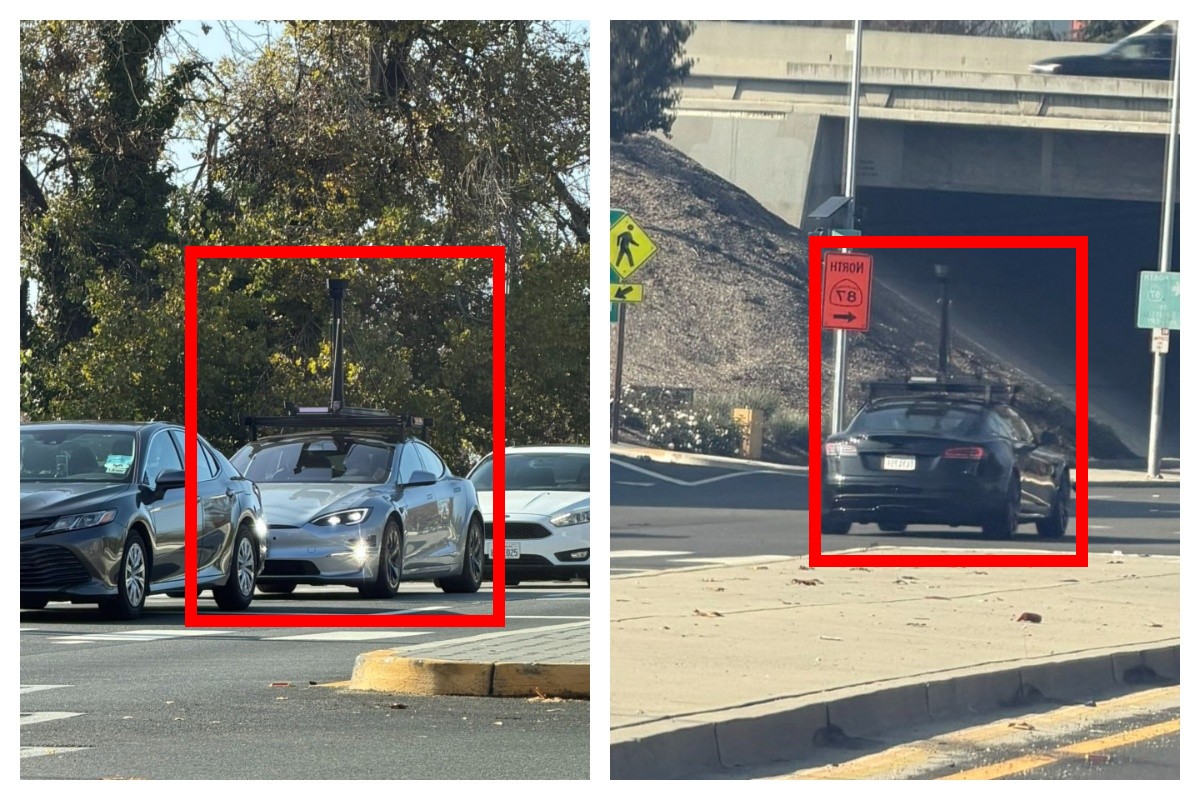

News
SpaceX Starlink competitor OneWeb misled the FCC, media with false “near-miss” narrative
In the latest trials and tribulations of a SpaceX Starlink competitor that went bankrupt after spending $3 billion to launch just 74 small internet satellites, it appears that OneWeb knowingly misled both media and US regulators over a claimed “near-miss” with a Starlink satellite.
Back on April 9th, OneWeb went public with claims that SpaceX had mishandled its response to a routine satellite collision avoidance warning from the US military, which monitors the location of satellites and space debris. According to OneWeb government affairs chief Chris McLaughlin, SpaceX disabled an automated system designed to detect and automatically command Starlink satellite collision avoidance maneuvers to let OneWeb move its satellite instead. McLaughlin also stated that “Coordination is the issue – it is not sufficient to say ‘I’ve got an automated system.’”
He also recently criticized the maneuverability of Starlink satellites, claiming that “Starlink’s engineers said they couldn’t do anything to avoid a collision and switched off the collision avoidance system so OneWeb could maneuver around the Starlink satellite without interference.” As it turns out, OneWeb’s “near-miss” appears to have been a farce and the company scrambled to promise to retract those statements in an April 20th meeting with the FCC and SpaceX.
In far more egregious comments made on April 20th to the Wall Street Journal, a publication with a long history of blindly disseminating anti-SpaceX rhetoric, McLaughlin likened OneWeb’s satellites to “Ford Focus” cars and attempted to lambast Starlink satellites by comparing them to “Teslas: They launch them and then they have to upgrade and fix them, or even replace them altogether.”
Over the past 17 months, SpaceX has launched more than 1380 operational Starlink v1.0 satellites, some 870 of which are operational. Another ~440 are in the process of reaching operational orbits. All told, some 1365 are still in orbit and around 1345 of those satellites are working as expected for a total Starlink v1.0 failure rate of roughly 2.5%. As is SpaceX’s bread and butter, however, reliability has been continuously improving and of ~960 Starlink satellites launched over the last ~12 months, the overall failure rate has dropped to less than 1% – an almost threefold improvement.
After exiting bankruptcy last November, OneWeb has completed just two more launches for a total of 140 operational satellites in orbit of a planned ~650. Operating at a much higher ~1200 km (~750 mi) orbit, any failure of OneWeb satellites would produce debris that could remain in orbit for decades, whereas SpaceX has explicitly chosen much lower ~550 km (~340 mi) orbits, meaning that debris reenters in a matter of years. At Starlink’s sub-300-kilometer (~185 mi) insertion orbit, any faulty satellites screened during SpaceX’s checkout process reenter in a matter of days or weeks thanks to drag from Earth’s atmosphere.
The first phase of SpaceX’s Starlink constellation will require approximately 4400 satellites in low Earth orbit (LEO) and the company is already almost a third of the way to that milestone. A second phase could see those numbers grow as high as ~12,000, followed by a third phase with more than 40,000 satellites much further down the road. Relative to OneWeb, Starlink is dramatically more ambitious and each SpaceX satellite offers superior bandwidth and latency in a bid to blanket the Earth in affordable, high-quality broadband internet.
Of course, as a consequence of needing so many satellites to build out a network with enough bandwidth to serve tens to hundreds of millions of people, there is an obvious risk that unreliable satellites could make LEO a much more challenging place to operate for both SpaceX and the rest of the world. It also demands an entirely new approach to collision avoidance given the impracticality of human operators manually managing a fleet of thousands – or tens of thousands – of satellites.
Towards that end, SpaceX is developing an autonomous collision avoidance system – though virtually nothing is known about that system outside of the company, creating a far from optimal situation for all other satellite operators. Nevertheless, aside from one publicized avoidance maneuver in 2019, SpaceX appears to be quickly becoming a responsible and (mostly) transparent operator and custodian.
In an apparent attempt to capitalize on vague fears of “space debris” and satellite collisions, OneWeb – or perhaps just McLaughlin – took it upon itself to consciously misconstrue a routine, professional process of collision-avoidance coordination between OneWeb and SpaceX. McLaughlin ran a gauntlet of media outlets to drag SpaceX through the mud and criticize both the company’s technology and response, ultimately claiming that SpaceX’s Starlink satellite was incapable of maneuvering out of the way.
Instead, according to a precise, evidenced timeline of events presented by SpaceX to the FCC, the coordination was routine, uneventful, and entirely successful. OneWeb itself explicitly asked SpaceX to disable its autonomous collision avoidance software and allow the company to maneuver its own satellite out of the way after SpaceX made it clear that the Starlink spacecraft could also manage the task. The event was neither “urgent” or a “close call,” as OneWeb and media outlets later claimed. SpaceX says it has been coordinating similar avoidance maneuvers with OneWeb since March 2020.
Most damningly, SpaceX says that immediately after OneWeb disseminated misleading quotes about the event to the media, “OneWeb met with [FCC] staff and Commissioners [to demand that] unilateral conditions [be] placed on SpaceX’s operations.” Those conditions could have actually made coordination harder, “demonstrating more of a concern with limiting [OneWeb’s] competitors than with a genuine concern for space safety.” Crucially, despite lobbying to restrict its competitors, “OneWeb [has] argued forcefully that [it] should be exempt from Commission rules for orbital debris mitigation due to their status as non-U.S. operators.”
In simple terms, OneWeb is trying to exploit the FCC to suppress its competition while letting it roam free of the exact same regulations. Meanwhile, SpaceX is focused on launching satellites and serving tens of thousands of beta customers as Starlink speeds towards virtually uninterrupted global coverage barely a year and a half after operational launches began – all while coordinating with dozens of other satellite operators to be the best ‘neighbor’ it can be in space.

Cybertruck
Tesla updates Cybertruck owners about key Powershare feature

Tesla is updating Cybertruck owners on its timeline of a massive feature that has yet to ship: Powershare with Powerwall.
Powershare is a bidirectional charging feature exclusive to Cybertruck, which allows the vehicle’s battery to act as a portable power source for homes, appliances, tools, other EVs, and more. It was announced in late 2023 as part of Tesla’s push into vehicle-to-everything energy sharing, and acting as a giant portable charger is the main advantage, as it can provide backup power during outages.
Cybertruck’s Powershare system supports both vehicle-to-load (V2L) and vehicle-to-home (V2H), making it flexible and well-rounded for a variety of applications.
However, even though the feature was promised with Cybertruck, it has yet to be shipped to vehicles. Tesla communicated with owners through email recently regarding Powershare with Powerwall, which essentially has the pickup act as an extended battery.
Powerwall discharge would be prioritized before tapping into the truck’s larger pack.
However, Tesla is still working on getting the feature out to owners, an email said:
“We’re writing to let you know that the Powershare with Powerwall feature is still in development and is now scheduled for release in mid-2026.
This new release date gives us additional time to design and test this feature, ensuring its ability to communicate and optimize energy sharing between your vehicle and many configurations and generations of Powerwall. We are also using this time to develop additional Powershare features that will help us continue to accelerate the world’s transition to sustainable energy.”
Owners have expressed some real disappointment in Tesla’s continuous delays in releasing the feature, as it was expected to be released by late 2024, but now has been pushed back several times to mid-2026, according to the email.
Foundation Series Cybertruck buyers paid extra, expecting the feature to be rolled out with their vehicle upon pickup.
Cybertruck’s Lead Engineer, Wes Morrill, even commented on the holdup:
As a Cybertruck owner who also has Powerwall, I empathize with the disappointed comments.
To their credit, the team has delivered powershare functionality to Cybertruck customers who otherwise have no backup with development of the powershare gateway. As well as those with solar…
— Wes (@wmorrill3) December 12, 2025
He said that “it turned out to be much harder than anticipated to make powershare work seamlessly with existing Powerwalls through existing wall connectors. Two grid-forming devices need to negotiate who will form and who will follow, depending on the state of charge of each, and they need to do this without a network and through multiple generations of hardware, and test and validate this process through rigorous certifications to ensure grid safety.”
It’s nice to see the transparency, but it is justified for some Cybertruck owners to feel like they’ve been bait-and-switched.
News
Tesla’s northernmost Supercharger in North America opens

Tesla has opened its northernmost Supercharger in Fairbanks, Alaska, with eight V4 stalls located in one of the most frigid cities in the U.S.
Located just 196 miles from the Arctic Circle, Fairbanks’s average temperature for the week was around -12 degrees Fahrenheit. However, there are plenty of Tesla owners in Alaska who have been waiting for more charging options out in public.
There are only 36 total Supercharger stalls in Alaska, despite being the largest state in the U.S.
Eight Superchargers were added to Fairbanks, which will eventually be a 48-stall station. Tesla announced its activation today:
North America’s northernmost Supercharger Fairbanks, AK (8 stalls) opened to public. https://t.co/M4l04DZ6B5 pic.twitter.com/zyL6bDuA93
— Tesla Charging (@TeslaCharging) December 12, 2025
The base price per kWh is $0.43 at the Fairbanks Supercharger. Thanks to its V4 capabilities, it can charge at speeds up to 325 kW.
Despite being the northernmost Supercharger in North America, it is not even in the Top 5 northernmost Superchargers globally, because Alaska is south of Norway. The northernmost Supercharger is in Honningsvåg, Norway. All of the Top 5 are in the Scandanavian country.
Tesla’s Supercharger expansion in 2025 has been impressive, and although it experienced some early-quarter slowdowns due to V3-to-V4 hardware transitions, it has been the company’s strongest year for deployments.
🚨🚨 Tesla Supercharging had a HUGE year, and they deserve to be recognized.
🍔 Opened Tesla Diner, a drive-in movie theater with awesome, Chef-curated cuisine
🔌 Gave access to Superchargers to several EV makers, including Hyundai, Genesis, Mercedes-Benz, Kia, Lucid, Toyota,… pic.twitter.com/yYT2QEbqoW
— TESLARATI (@Teslarati) December 10, 2025
Through the three quarters of 2025, the company has added 7,753 stations and 73,817 stalls across the world, a 16 percent increase in stations and an 18 percent increase in stalls compared to last year.
Tesla is on track to add over 12,000 stalls for the full year, achieving an average of one new stall every hour, an impressive statistic.
Recently, the company wrapped up construction at its Supercharger Oasis in Lost Hills, California, a 168-stall Supercharger that Tesla Solar Panels completely power. It is the largest Supercharger in the world.
News
Tesla shocks with latest Robotaxi testing move
Why Tesla has chosen to use a couple of Model S units must have a reason; the company is calculated in its engineering and data collection efforts, so this is definitely more than “we just felt like giving our drivers a change of scenery.”

Tesla Model S vehicles were spotted performing validation testing with LiDAR rigs in California today, a pretty big switch-up compared to what we are used to seeing on the roads.
Tesla utilizes the Model Y crossover for its Robotaxi fleet. It is adequately sized, the most popular vehicle in its lineup, and is suitable for a wide variety of applications. It provides enough luxury for a single rider, but enough room for several passengers, if needed.
However, the testing has seemingly expanded to one of Tesla’s premium flagship offerings, as the Model S was spotted with the validation equipment that is seen entirely with Model Y vehicles. We have written several articles on Robotaxi testing mules being spotted across the United States, but this is a first:
🚨 Tesla is using Model S vehicles fitted with LiDAR rigs to validate FSD and Robotaxi, differing from the Model Ys that it uses typically
Those Model Y vehicles have been on the East Coast for some time. These Model S cars were spotted in California https://t.co/CN9Bw5Wma8 pic.twitter.com/UE55hx5mdd
— TESLARATI (@Teslarati) December 11, 2025
Why Tesla has chosen to use a couple of Model S units must have a reason; the company is calculated in its engineering and data collection efforts, so this is definitely more than “we just felt like giving our drivers a change of scenery.”
It seems to hint that Tesla could add a premium, more luxury offering to its Robotaxi platform eventually. Think about it: Uber has Uber Black, Lyft has Lyft Black. These vehicles and services are associated with a more premium cost as they combine luxury models with more catered transportation options.
Tesla could be testing the waters here, and it could be thinking of adding the Model S to its fleet of ride-hailing vehicles.
Reluctant to remove the Model S from its production plans completely despite its low volume contributions to the overall mission of transitioning the world to sustainable energy, the flagship sedan has always meant something. CEO Elon Musk referred to it, along with its sibling Model X, as continuing on production lines due to “sentimental reasons.”
However, its purpose might have been expanded to justify keeping it around, and why not? It is a cozy, premium offering, and it would be great for those who want a little more luxury and are willing to pay a few extra dollars.
Of course, none of this is even close to confirmed. However, it is reasonable to speculate that the Model S could be a potential addition to the Robotaxi fleet. It’s capable of all the same things the Model Y is, but with more luxuriousness, and it could be the perfect addition to the futuristic fleet.








